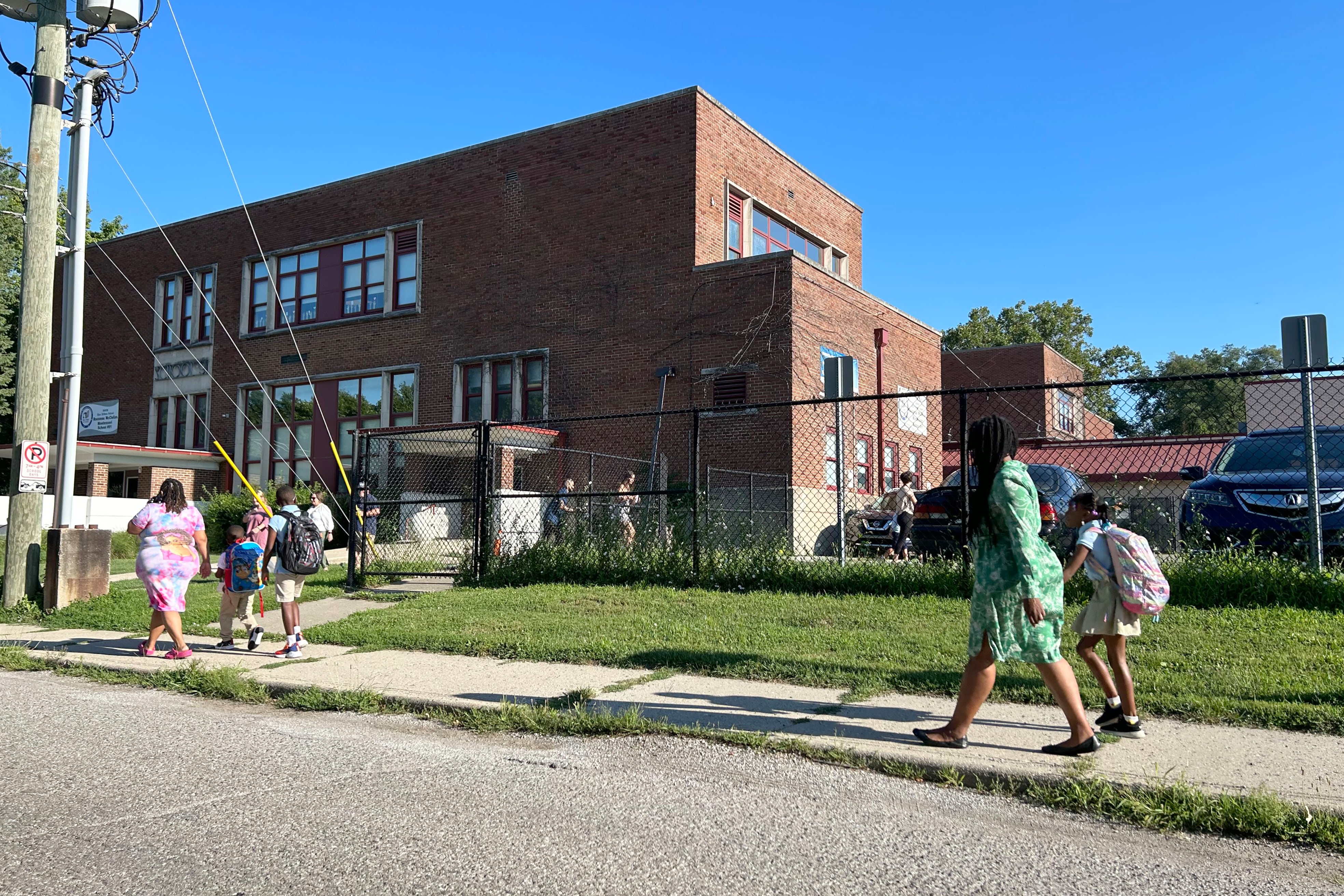Sign up for Chalkbeat Indiana’s free daily newsletter to keep up with Indianapolis Public Schools, Marion County’s township districts, and statewide education news.
Enrollment at Indianapolis Public Schools has remained fairly stable since last year, despite the closure of six buildings that sent over 1,000 students searching for new schools this year.
Marion County’s largest district lost only 169 students from 2022-23 to 2023-24, bringing total enrollment to 21,858, according to data from the Indiana Department of Education. The figure excludes students enrolled in charter schools within the district’s Innovation Network of autonomous schools, which the state counts separately.
Although the district continues to lose students annually, the latest figures indicate that sharp drops in enrollment stemming from the pandemic have essentially flattened out; from 2019-20 to 2020-21, the district lost roughly 10% of its students. Enrollment declines this year and last school year have been less than 1%.
This year’s slight decline could indicate that enrollment won’t change dramatically next year, when the district embarks on the latter half of its Rebuilding Stronger reorganization and sends even more students to different schools as IPS breaks up its K-8 schools.
In a bid to boost its enrollment, IPS has paid federal pandemic relief to a private firm to recruit students. IPS has also stressed the choices parents have within the district as it implements Rebuilding Stronger.
Overall, district officials were happy with the new enrollment numbers, said Patrick Herrel, the district’s director of enrollment and options.
“We did put a very intentional and concerted effort into making sure we were reaching out to and communicating with families so we would lose as few students as possible during the big transition that happened last year,” he said.
Student enrollment in the district’s Innovation Network charter schools grew by about 200 to roughly 10,350 students total. That continues a trajectory of growth among these charter schools that has recently kept total enrollment in the IPS portfolio of schools relatively stable.
Enrollment at charter schools not affiliated with IPS but operating within IPS boundaries also increased from last year by a few hundred students to roughly 13,600.
Demographics at charter and traditional public schools differ
Both independent and Innovation charter schools as a whole have roughly 75% of their students eligible for free or reduced-price lunch, compared with about 56% of students in the district’s non-charter population.
At those charters, roughly 51% of students are Black, compared with the district’s 37%.
But compared with those charter schools, non-charter IPS schools have a higher proportion of Hispanic students, special education students, and English language learners.
Student enrollment grows at several IPS schools
IPS schools that grew the most this year include those that the district set as default schools for students at closing schools. That includes James Russell Lowell School 51, which had the biggest jump, from 294 students to 528, or nearly 80%, and Anna Brochhausen School 88, which grew from 263 to 384 students.
But schools not in that category also saw big jumps, including Brookside School 54 and George Julian School 57 on the east side of the district — both of which grew by over 20%.
Herrel said those schools — along with William McKinley School 39, which grew by roughly 9% — did a decent amount of recruiting for families at schools that closed.
“I think pretty universally we saw not all families chose to go to their guaranteed default school,” he said. “So pretty commonly, they spread around nearby schools.”
Schools where enrollment dropped the most include George Washington High School, which declined to 624 students, a loss of roughly 17%, and the Center for Inquiry at School 27 in the Kennedy-King neighborhood. In fact, all four Center for Inquiry schools had enrollment declines.
Parents at these and other IPS magnet schools voiced concerns about the Rebuilding Stronger’s plan to break up the K-8 model that they argued served these schools well. Some decided to pull their children out of those schools ahead of the district’s sweeping grade reconfigurations that will take place next year.
But Herrel said the exact cause of the drops is unclear.
Applications for IPS schools higher than last year
Meanwhile, IPS continues to receive applications for its schools at a higher rate than last year, according to officials.
Just before the district’s winter break in December, 22,060 families applied — a 43% jump compared to the same time last year, according to Herrel.
“We were very intentional last year in how we communicated and worked with families on how they were going to be impacted on Rebuilding Stronger,” Herrel said. “We’re trying to apply that same approach this coming school year.”
Amelia Pak-Harvey covers Indianapolis and Lawrence Township schools for Chalkbeat Indiana. Contact Amelia at apak-harvey@chalkbeat.org.







